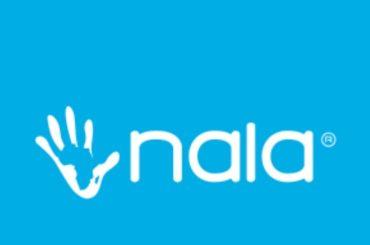Are you a startup or a business owner or an entrepreneur? Learn all you need to know about void cheque, how it works, when can a void cheque be used, how you can make void cheque and all you need to know.
You can also explore how to read a cheque in 9 ways as we dive into the topic of the day, ‘Void Cheque’.
What is a Void Cheque?
A void cheque is one that has the word “VOID” across it, making it impossible for anyone to fill it out and use it to make a payment.
Read- Financial Reporting and What Startups Should Know.
How can I make a Void Cheque?
- Simply write “VOID” in big letters across one of your cheques with a pen or permanent marker.
- Use well-spaced, tall, and wide lettering. Use a black pen or marker (the thicker, the better) to completely cover the cheque’s face without concealing the banking information at the lower-left corner of the cheque.
- You should make it challenging for thieves to cover or erase your empty mark. They will have a blank cheque if you don’t.
- The cheque does not require your signature or the entry of any further data.
- The recipient copies your banking information from the voided cheque and inputs it into their systems when you give them one.
To ensure that no one else can access that information, they should subsequently trash the cheque.
What purposes do Void Cheques serve?
When establishing a payroll deposit or automatic payments, you might be required to produce a voided cheque.
Each cheque has your account information printed on it, so you can establish an electronic connection to your bank account using the void cheque.
By cancelling the cheque, you can avoid sending a “blank cheque” that thieves could fill out and use to take money from your account.
Read- Wave Accounting, Pros and Cons and 11 Alternatives.
When can Void Cheques be used?
Void cheques can be used in some situations like :
- Direct Deposits
- Automatic transfer
- Errors
1. Direct Deposits
Instead of writing cheques to pay their staff, many firms now use direct deposit. Your money will be electronically paid into your account on payday as soon as your accounts are connected.
Read- How to create an invoice in an Excel.
2. Automatic Transfers
For recurring costs like bills and rent, you may set up automatic payments so that the money is routinely deducted from your account rather than requiring you to mail a cheque or pay in person.
3. Errors
If you write out a cheque incorrectly (for example, by writing the wrong payee’s name or amount), void or destroy it. You won’t use it for anything, and it’s dangerous to retain a cheque that is just partially filled out.
Read- What is Netsuite, Pricing and How it works.
3 Alternatives to a Voided Cheque
There are several alternatives if you don’t currently have a cheque to void:
- Request a counter cheque from your bank, which is a cheque produced on demand by a branch. For counter cheques, banks often charge a nominal fee.
- Check to see if a deposit slip for a savings or chequing account is acceptable.
- Check to see if your bank’s letter is acceptable.
There may also be other ways to set up electronic payments than using a cheque (or a picture of one). Companies presumably request printed paper because:
- It lessens the likelihood of inaccuracy
- It lessens the likelihood of deception.
Voided cheques are less frequently needed because consumers frequently submit their routing and account information online without any issues.
For instance, online banks allow you to link external accounts by manually entering the necessary information. Customers can pay bills by e-cheque when they enter their chequing account information with billers like utility companies.
Some companies even allow clients to make phone payments, allowing them to give their information verbally.
What information is needed from a Void Cheque?
A valid void cheque will always have three pre-printed numbers that provide your bank information and they are:
- A 5-digit transit number (which identifies your bank branch)
- A 3-digit institution number (which identifies your bank), and
- Your account number.
Is it safe to give my Void Cheque?
In the real sense nobody can even use your void cheque to take money from your account if you had written “Void” across the front. So no need to worry if it’s safe.
But it is better to be careful because thieves can clean the void mark and make payments with it.
Why do people ask for Void Cheques?
Most employers of labour will ask for a voided cheque to set up your direct deposit plus when filling out a form.
They ask for the void cheque because it has all the details your employer needs to help make sure your paycheck is deposited in your bank account.
Can you get scammed from a Voided Cheque?
The internet world is prone to all kinds of scam and you can get scammed if you send your void cheque as an image or attachment to someone.
Safely send the void cheque yourself and trust the person not to use it for any dubious act. So note that whenever you give your bank information to someone, there is always a risk of it falling into dubious hands and they can use it to scam you.
Does Void Cheque need to be signed?
You don’t need to sign your void cheque or enter any other information on it because if you do, thieves can erase the void mark on it and use it to collect money from you bank account.
What happens if you cash a Voided Cheque?
The bank you cashed it from would charge you, and depending on the void cheque amount and your current bank balance, your account could then be overdrawn immediately.
Conclusion
The majority of companies don’t even require an original void cheque; a duplicate of a cancelled cheque will do.
There are also other alternatives to void cheque which you can also use as a startup. Hope you enjoyed the read?
Key Takeaways
- The term “void” is written across the front of a voided cheque.
- You can use it to gather the data required for electronic payments.
- Many businesses let you submit your banking information instead of a voided cheque.





